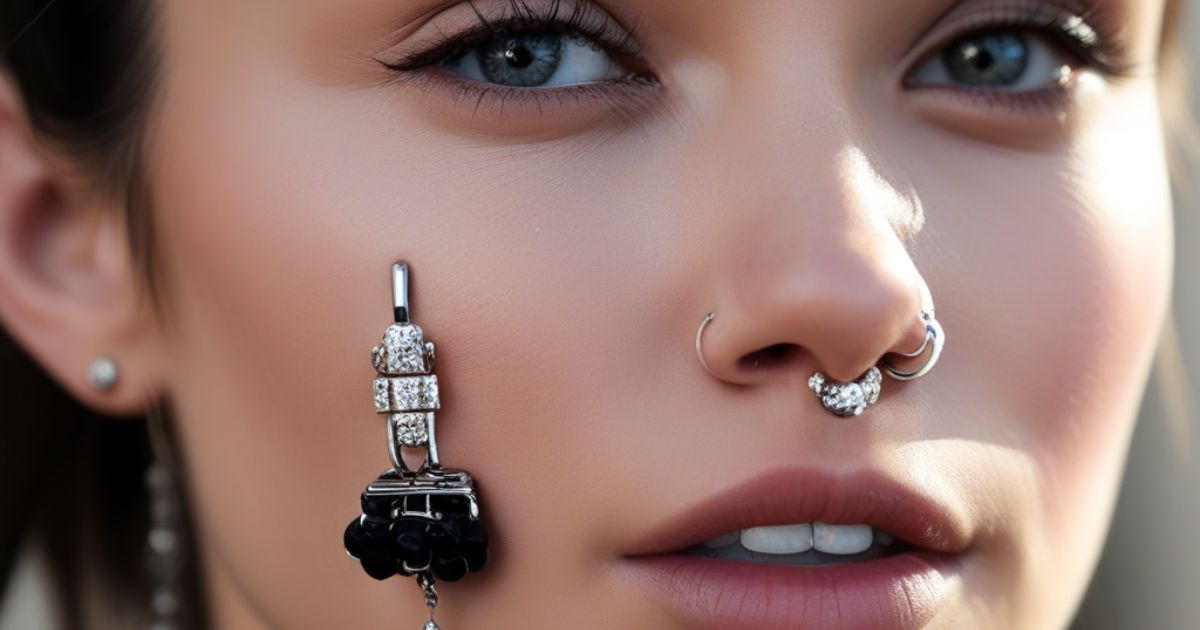A double nose piercing involves wearing two nose studs or rings, one on each side of the nose. It is a striking and eye-catching piercing style. Getting a double nose piercing allows you to make a bold fashion statement while highlighting the symmetry of your nose. However, it is important to understand what is involved before getting this unique piercing.
This article will provide all the information you need to know about getting and caring for a double nose piercing on opposite sides, including what it looks like, benefits and drawbacks, costs, healing process, proper care, jewelry options and more.
What is a double nose piercing on opposite sides?
A double nose piercing on opposite sides involves piercing both nostrils, one on each side of the nose. Small studs, usually captive bead rings or small hoops, are worn in each piercing. This creates an eye-catching look with symmetry. Unlike a septum piercing which is hidden, a double nose piercing is prominently visible on the front of the nose. Some people also opt for a stud in one side and a ring in the other for variation.
Pros of double nose piercing on opposite sides
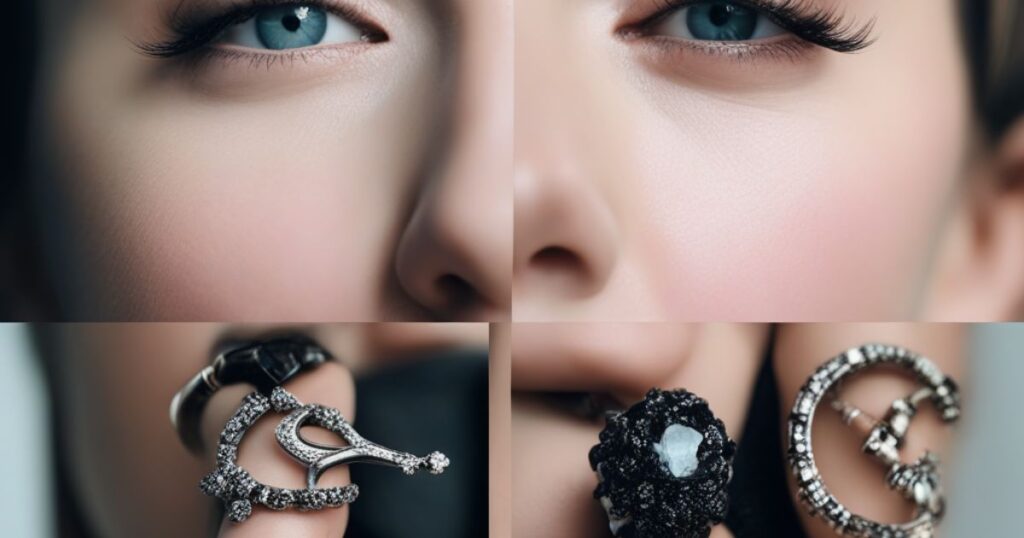
There are several pros to consider with a double nose piercing on opposite sides. It allows for more styling options compared to a single piercing by creating balance. You can mix and match different jewelry for each side such as small hoops, studs or charms. A double piercing also draws attention to the nose and creates an eye-catching focal point on the face. Many people find it adds to their overall look and self-confidence. Lastly, it heals in a similar timeframe as a single piercing so the commitment is not drastically longer.
Cons of double nose piercing on opposite sides:
Some potential cons to be aware of include the fact that it is a more involved piercing that takes longer to fully heal compared to a single nostril piercing. There is also a greater risk of irritation if bumped or snagged since there are two piercing sites rather than one. It may cause more initial pain getting both nostrils done at once. Keeping two piercings clean as part of the daily healing routine can be more time consuming than a single piercing as well. Lastly, potential employers or work environments may have policies against visible facial piercings other than a single small stud.
What does a double nose piercing on opposite sides represent?
Having both nostrils pierced can represent a few different things. For many, it is simply about personal expression and styling preference and has no deeper meaning. However, some who get a double nose piercing see it as representing balance, symmetry or duality since piercings are placed on opposite sides. There is an emphasis on highlighting both sides of the nose equally rather than favoring one side alone. In certain cultures, a double nose piercing was traditionally meant to represent beauty, femininity or coming of age rituals for women. Today, it is usually done for aesthetic appeal rather than cultural symbolism.
Does double nose piercing on opposite sides look good?
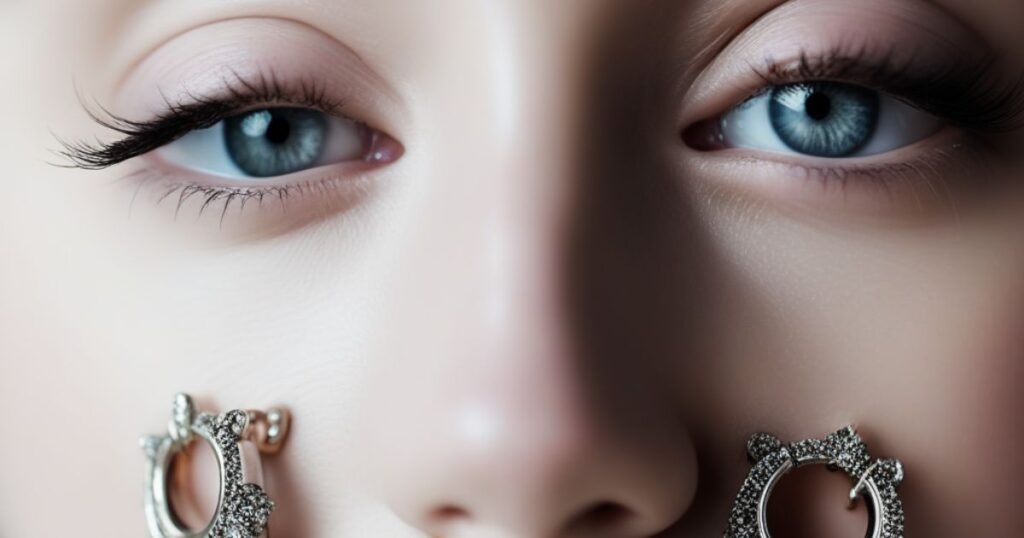
Whether a double nose piercing looks good is ultimately subjective and depends a lot on individual facial features and style preferences. In general, it tends to flatter faces that are symmetrical with well-proportioned nose shapes. Those with petite, delicate noses often really pull off the look. However, even those with larger or crooked noses can find the right placement and jewelry to accentuate their best features.
Proper jewelry sizing is important avoid anything too big or thick for your nose shape. Regular cleaning and jewelry changes during healing will help ensure the piercings don’t get irritated or swollen looking either. With the right placement and well-cared for piercings over time, a double nose piercing can absolutely enhance one’s facial features and complement many different styles.
How much does a double nose piercing on opposite sides cost?
The average cost of a double nose piercing ranges from $50-$100 USD total. Pricing can vary depending on location, the experience level of the piercer, and type of jewelry selected. A professional piercing in a reputable studio will generally be on the higher end of that range. Basic anodized titanium or surgical steel studs suitable for initial healing may be around $15-30 per side. More expensive materials like solid gold or specialized chains will drive the cost up further.
Most reputable piercers do not offer a “buy one, get one free” type of deal since piercings require individualized care. Overall it’s worthwhile to get a double nose piercing done right the first time by a licensed piercer even if it costs a bit more initially.
How painful is a double nose piercing on opposite sides?
Most people rate the pain level of a double nose piercing as a 3-4 out of 10, with 10 being the most painful. While it definitely feels uncomfortable, the pain is usually bearable and brief. Getting piercings on opposite sides at the same time means dealing with the initial pain only once instead of twice. Factors like your pain tolerance, the piercer’s technique, and whether you’re feeling anxious can impact your personal experience.
The tip of the nose is less sensitive than other areas like nipples or the belly button. Using a numbing cream can also help if you’re nervous. Most clients say the piercing itself lasts only a few seconds on each side. Take some deep breaths and try to stay relaxed – the pain subsides quickly once the needle is through.
How long does it take to heal?

On average, the healing time for a double nose piercing is around 6-12 months before being fully recovered. However, initial healing takes several weeks with key milestones:
- Weeks 1-4: Piercings will be quite tender, occasional bleeding or fluid discharge is common as the wounds close over. Minimal movement is best.
- Weeks 4-6: Soreness ebbs but cleaning 2x daily with sterile saline continues. Swelling may occur if bumped or snagged.
- Months 3-6: Piercings are stable but still easily irritated. Avoid harsh soaps/oils. Swelling occurs less.
- Months 6-12: Fully integrated, but occasionally react after bumps.Changing jewelry too early can disrupt healing.
- 1 year: Piercings are mature and rarely irritated unless injured or infected. Jewelry can be changed as desired.
Proper care assists healing. Give piercings full time to integrate before activities like sports that may cause trauma. Seek help promptly if signs of infection occur like pus or fever.
Should you wait to get a second nose piercing?
Most piercers recommend waiting 4-6 months after your initial nose piercing before adding a second piercing on the opposite side. This allows enough time for the first piercing to fully heal without complications before subjecting that area to another piercing trauma. Piercing both sides simultaneously risks interfering with healing if they accidentally bump into each other. The cartilage also needs adequate recovery time in between piercings.
If you attempt to pierce both sides too quickly, you could potentially end up with slow-healing or rejected piercings with greater scarring risks. For best results, space them out by 3-6 months and follow all aftercare guidelines carefully for each individual piercing.
What gauge is suitable for a double nose piercing on opposite sides?
The ideal gauge or thickness of jewelry for a double nose piercing depends on the individual’s anatomy and preferences. In general, lighter weights are most comfortable during healing:
- 18 gauge (1.2mm) is a very common and suitable thickness that provides strength without being too heavy or cumbersome.
- 16 gauge (1.5mm) can also work comfortably for most but may feel slightly heavier. Check jewelry thickness before committing.
- Anything heavier like 14 gauge (1.6mm) risks being too weighty and causing irritation in fragile new piercings.
- For sensitive skin, some prefer to start with the smallest possible 20 gauge (0.8mm) diameter if anatomical features permit.
Overall, high-quality 18 or 16 gauge nose studs and rings are the most practical for initial jewelry in double nostril piercings. Lighter weights promote gentle, problem-free healing for new perforations.
Preparing for Double Nose Piercing
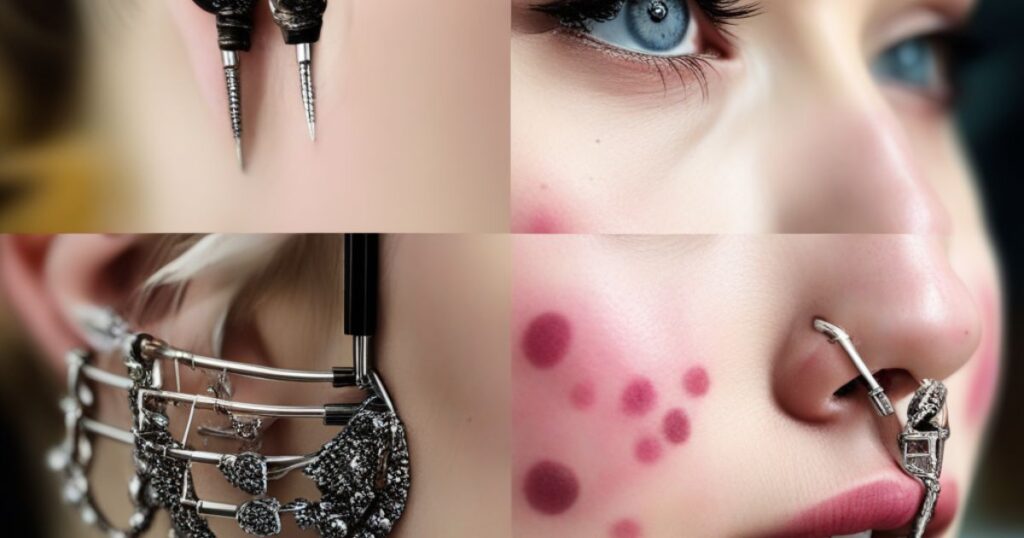
To prepare, it is important to research your options carefully before the appointment. Find a reputable APP member piercer. Avoid eating a large meal beforehand that could cause nausea. Ensure jewelry is on hand in the preferred style and metal. Bring identification for documentation. Avoid medications like blood thinners that could impact bleeding. Cleanse the nose area well before arriving. Ask any questions to feel fully informed. Inform the piercer of your health history. Relaxation techniques can help calm nerves.
Choosing Jewelry for Double Nose Piercing
Piercers generally install flat back labret style studs for initial nostril piercings. Their flat, snag-free backs are most comfortable and least likely to irritate during healing. Common metals for starter jewelry include implant grade stainless steel or titanium which are hypoallergenic and wear well. Select small sized studs or rings in simplistic designs best suited to a new piercing without embellishments. Avoid moving or twisting jewelry until fully healed.
Double Nose Piercing Process
After marking placement, the area is cleansed. Piercers use an automatic single-use piercing needle pushed swiftly through both sides. Jewelry is then installed and ends secured. The process takes only a few seconds per side butvaries between clients. Minor bleeding, swelling and discharge is expected initially as wounds heal. Though there may be momentary pain, it is rapidly over. Relaxation and regulated breathing helps many tolerate the process calmly.
How to Properly Care for Double Nose Piercings
Proper aftercare is essential for avoiding complications during the next 6-12 months of healing. Rinse piercings gently with sterile saline solution or seawater 1-2 times daily. Avoid over-cleaning which can dry out new tissue. Do not over-handle, twist or play with jewelry. Leave any discharges or crusties alone your regular cleaning routine will dissolve them.
Keep hands clean before touching. Moisturize regularly around piercings but do not apply creams or ointments inside pierced holes. Avoid direct sun exposure, chlorinated pools or hot tubs for 3+ months until fully integrated. See your piercer immediately with any signs of infection.
Avoid Contamination
Be especially mindful of clean hands when manually cleaning or changing your jewelry. Ensure any items like towels or clothing that contact your nose are washed regularly to avoid introducing new bacteria or viruses into the healing sites.
Clean Twice Daily
Morning and evening cleaning helps flush away bodily fluids and saline residue while keeping crusties from accumulating and potentially trapping germs near pierced openings. Use a quick rinse each time for optimal hygiene without over-drying the area.
Oral Care
Be aware of your piercings when brushing and flossing nearby teeth – angles your mouth naturally during these tasks could cause irritation if they contact the piercings.
Be Gentle
Avoid harsh rubbing, excessive touching or bumping the new piercings. Even accidental knocks may cause lingering soreness or slow healing. Gentle rinsing and drying is all that’s required for routine daily cleaning.
Mind Clothing and Towels
Pay attention to fabrics that may catch on the jewelry during dressing or drying. A snagged ring or stud has potential to irritate a piercing that’s still in the early stages of healing. Soft, loose attire is less likely to disturb or apply pressure.
Follow Specific Instructions
Any additional instructions provided by your piercer should be strictly adhered to especially regarding aftercare product recommendations, sleeping positions and activity limitations in the initial healing phase. Consistency in care helps maximize successful results.
Cleaning a Double Nose Piercing on Opposite Sides
Routinely cleaning with sterile saline is vital. Spray directly onto each piercing, allowing the saline to run through and wash away any debris. Avoid excessive wiping or handling which risks irritation. Once fully healed, plain water can be used if needed. Inspect regularly for signs of irritation and contact a professional if concerned. With correct at-home care, a double nose piercing can integrate smoothly without infections.
Best metals for a double nose piercing on opposite sides
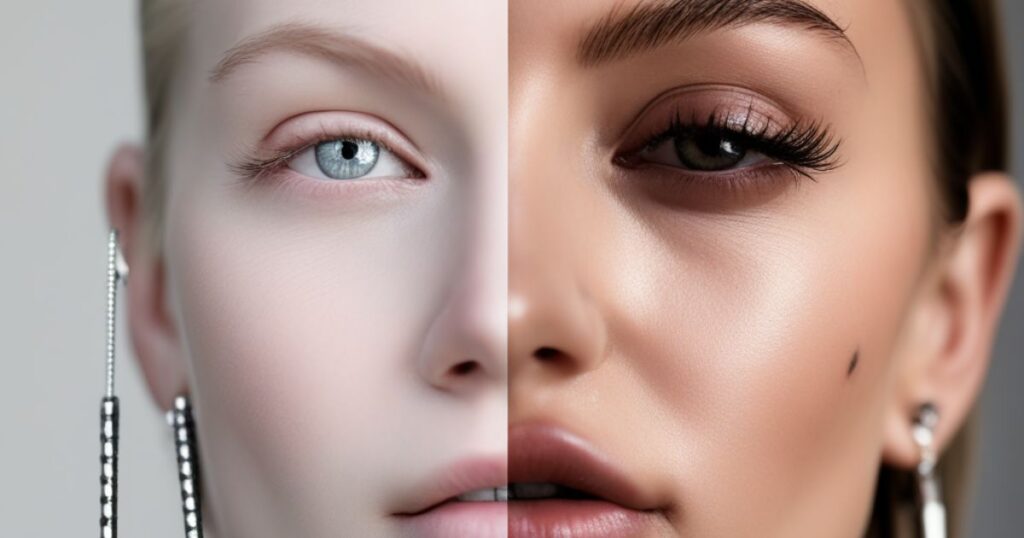
The metal composition of nose piercing jewelry plays an important role in the healing process and long term results. Implant-grade materials offer the best biocompatibility for delicate, prolonged tissue contact in a nasal piercing.
Some top choices are titanium, niobium, 14k-18k gold and platinum – all of which have proven non-allergenic and non-porous properties preferred by most piercers. Lower quality alloys with nickel or other contaminants are more likely to cause irritation reactions. High polish finishes also minimize friction and snagging. Consider your own medical history and allergies when selecting the best-fitting material from these premium options.
Titanium
Titanium is light, hypoallergenic and commonly recommended for initial jewelry during nose healing. It allows for smooth expansion without pore clogging. Many piercers only use implant-grade titanium.
Pros: Biocompatible, affordable, commonly stocked.
Cons: Can have a more “industrial” look versus more lustrous alternatives.
Gold
High-karat yellow, rose or white gold maintains a sleek appearance over time. It’s a non-ferrous option once fully integrated.
Pros: Elegant look, fairly durable.
Cons: More expensive, prone to scratches without rhodium plating.
Surgical Stainless Steel
Suitable for initial jewelry, though can potentially cause reactions in sensitive individuals. Implant grade provides necessary chromium content.
Pros: Affordable, stocked by many retailers.
Cons: Nickel content possible, may cause irritation or discolor nostrils.
Platinum
A premium hypoallergenic choice that rarely irritates. Maintains polish excellently with a premium classic look.
Pros: Highly biocompatible, durable polished finish.
Cons: Very costly, may dent more easily than gold if unusually bumped.
Conclusion
A double nose piercing is a striking look that suits many face shapes and styles when done correctly. With careful research and quality jewelry placement, most find the minimal pain and moderate healing period worthwhile. Proper long-term care keeps the piercings healthy and complication-free for enjoyment. Overall, it makes a bold aesthetic statement when coordinated harmoniously on opposite nostrils.
